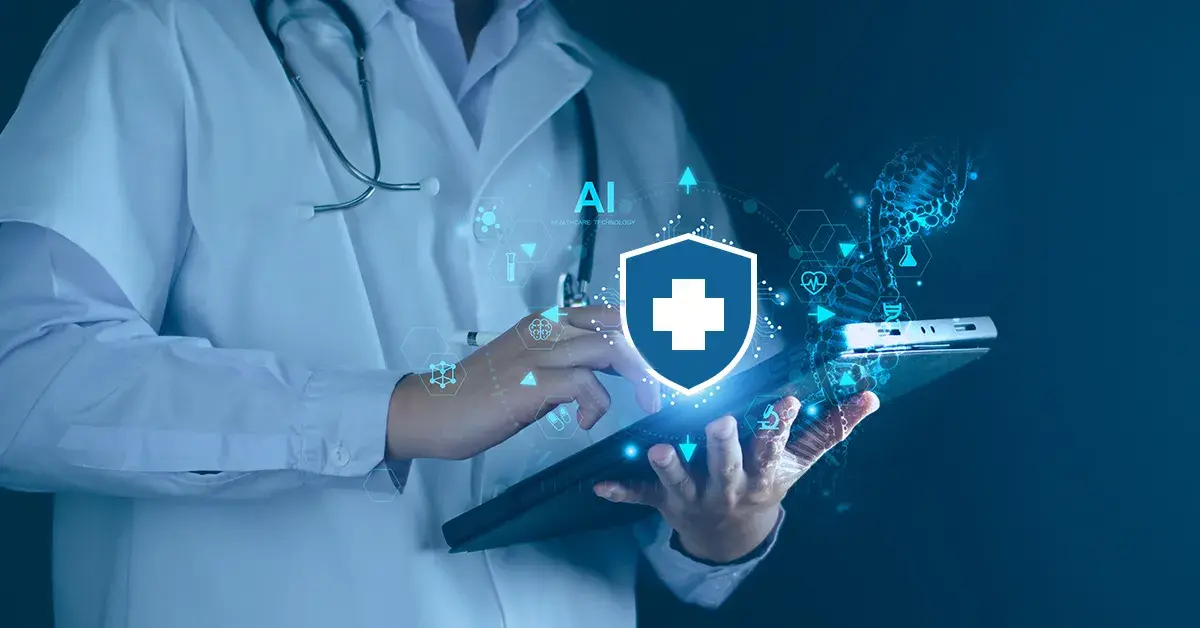Every second counts in healthcare. Even small delays can have big consequences on patient care, revenue, and organisational stability.
Credentialing delays can mean longer wait times, which in turn can delay diagnosis and treatment, cause patient frustration, and lead to a loss of trust in the healthcare system. Healthcare organisations can lose significant revenue as uncredentialed providers can’t bill for services. Careless credentialing errors can lead to denied claims and financial losses.
With credentialing automation, healthcare organisations can onboard providers more efficiently and free up administrative staff to focus on higher-value tasks rather than paperwork. What took weeks or months to do can be done in hours. Features like real-time data syncing and direct integrations with healthcare management systems make credentialing a fast and accurate process.
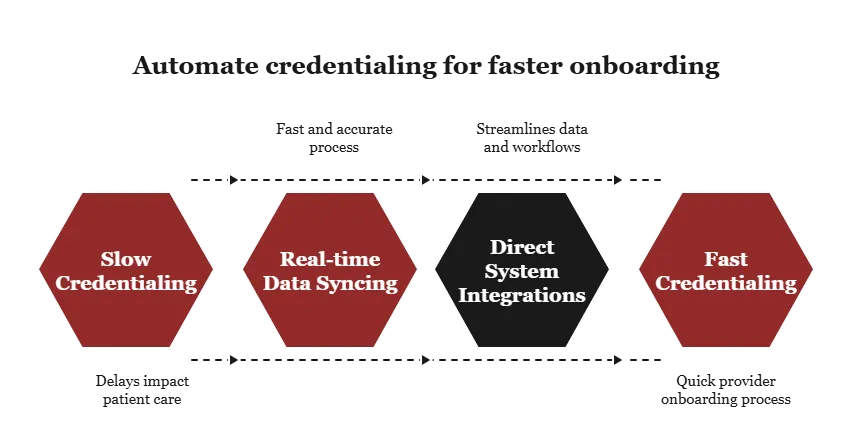
What is Automated Credentialing?
Automated credentialing means using software to streamline the tedious, manual tasks associated with the healthcare credentialing process, speeding it up and reducing errors. Automated credentialing tools use artificial intelligence and machine learning to verify and maintain the credentials of healthcare providers.
Can all credentialing processes be automated? Absolutely!
You can use credentialing automation software to streamline enrollment, verification, re-credentialing, and reporting. The tool can send reminders when recredentialing is due or licenses are about to expire. It can automatically check official databases for excluded individuals or providers who are barred from participating in federal healthcare programs (like Medicare and Medicaid), so your organisation doesn’t get into trouble with the law.
Automated credentialing doesn’t just reduce paperwork, it ensures qualified providers can diagnose and treat patients quickly. They don’t have to wait for payer approval.
When a hospital hires a new specialist, the software collects credentials, verifies licenses, and checks exclusion databases like SAM and OIG LEIE. It takes a few clicks to do what would take weeks to do manually, and compliance risks are flagged instantly. The specialist can start seeing patients and billing them faster. Credentialing software also continuously monitors your organisation after onboarding, protecting it from future legal or financial risks.
The Technologies Behind Automated Credentialing
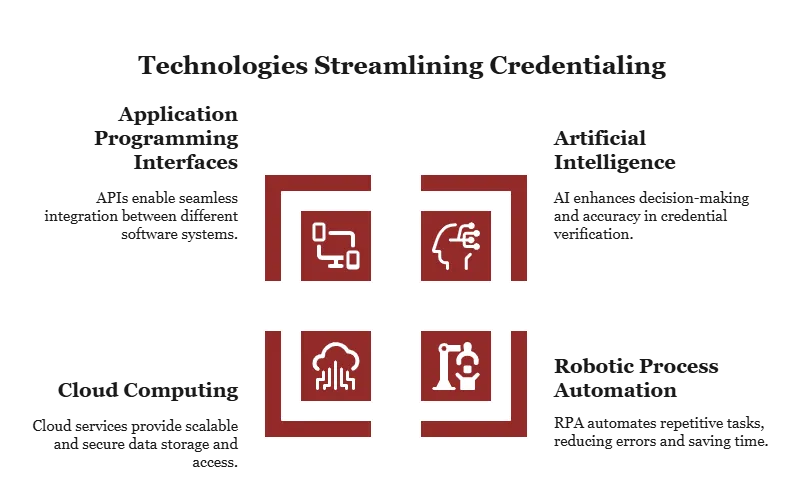
Automated credentialing tools use various technologies that work together to streamline processes and increase efficiency, accuracy, and compliance. Here are the top ones:
Artificial Intelligence and Machine Learning
AI helps systems extract relevant data from documents via Natural Language Processing and Optical Character Recognition. Machine Learning algorithms then assess the data to detect patterns, flag inconsistencies, detect inaccuracies, and prioritize tasks. AI also reduces errors and manual data entry with intelligent document processing and anomaly detection.
Robotic Process Automation (RPA)
RPA automates repetitive, rule-based administrative tasks, like filling out verification forms and initiating communication for primary source verification. The technology mimics human actions but is faster and more accurate.
Cloud computing
Credentialing automation tools that use cloud computing offer a centralized, secure, and accessible platform for all provider data. They ensure remote access for authorized personnel, real-time updates, and scalable infrastructure without on-premise IT management.
Application Programming Interfaces (APIs)
Seamless data exchange is vital in healthcare credentialing. Automated credentialing tools use APIs to pull information from primary source verification databases, Electronic Health Records, payer enrollment systems, and human resource platforms. This ensures data consistency and quickens the verification process.
The Benefits of Automated Credentialing
Automated credentialing systems eliminate manual work, enable providers to treat patients on time, and ensure healthcare facilities remain compliant. Here are the top benefits of automated credentialing.
1. Fewer mistakes
To err is human, and manual processes are prone to errors. When humans get tired, they make mistakes. A misplaced document or a forgotten follow-up can result in delays, compliance issues, or even wrong treatments. Automation ensures data accuracy at every step.
Automated credentialing tools can instantly verify provider credentials. They gather information from trusted sources like state medical boards and national databases and then cross-check across multiple systems. If any discrepancies are found, the system sends alerts so they can be resolved instantly.
2. Faster onboarding
Manual credentialing is a time-consuming process that requires extensive paperwork. Automated credentialing significantly increases efficiency and speed by quickly verifying licenses, certifications, and malpractice history. Digital forms, automatic reminders, and real-time monitoring streamline every process, enabling providers to start working and billing patients sooner.
For providers, faster onboarding means they can begin treating patients almost immediately. Patients get timely access to care, and the organization boosts its revenue. Traveling physicians and telehealth providers can also treat patients in different states and facilities with minimal disruption.
3. Enhanced compliance
Healthcare is a highly regulated industry, and even a single oversight can lead to severe consequences, including compliance violations, denied reimbursements, hefty fines, and legal liability. Automated systems minimize the risk of compliance violations by ensuring that every credential check follows strict regulatory requirements.
Tracking the ever-evolving regulations to maintain compliance can be overwhelming if you use a manual system. Automated credentialing streamlines the process of tracking and maintaining compliance. Real-time alerts, reminders, and reports ensure your healthcare organization stays up-to-date with regulatory deadlines and audits, reducing the risk of non-compliance.
4. Cost savings
Automating your credentialing process means long-term savings. You reduce paperwork and administrative work, and process credentials more efficiently. The software automates repetitive tasks like document verification, data entry, and follow-ups, allowing your staff to focus on higher-level tasks like provider quality assurance, policy and compliance oversight, and process improvement.
5. Centralized data management
An automated credentialing system features a centralized data repository for all provider information, encompassing the entire credentialing process, from initial application to recredentialing. Because data isn’t scattered across different systems, decision-makers can access it, analyze it, and make informed decisions.
The software improves collaboration between departments, streamlines audits, and ensures stakeholders have access to the most up-to-date provider information. It promotes transparency and operational efficiency.
5 Must-Have Automations for Your Credentialing Process
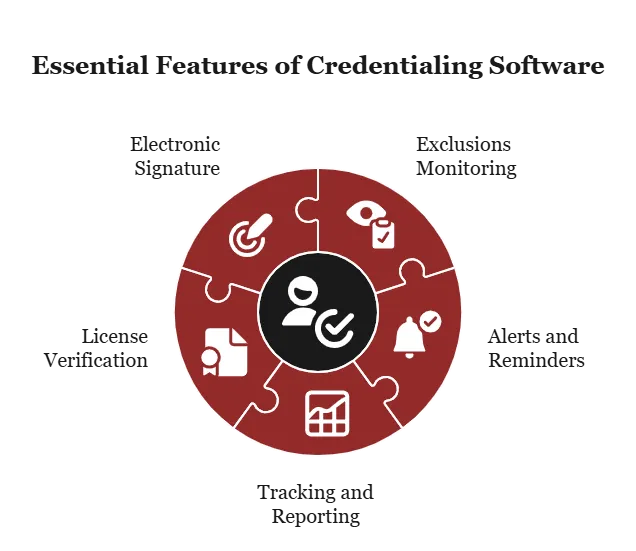
The primary function of an automated credentialing tool is to automate repetitive tasks, allowing staff to concentrate on more complex work. Here are the must-haves for your software.
1. Exclusions monitoring
Manually checking if healthcare providers are not excluded from participation in federally funded healthcare programs can be a time-consuming process. Automate exclusion monitoring for every provider and monitor federal and state exclusion databases. The software will instantly notify you of flagged exclusions.
2. Alerts and reminders
Healthcare facilities that automate these two tasks stay ahead of critical deadlines, such as certification expirations, license renewals, and re-credentialing dates. Automation ensures providers and administrators are quickly notified of pending deadlines, along with prompts on the course of action.
3. Tracking and reporting
Tracking provides real-time visibility into each provider’s status, helping organizations reduce risk, ensure compliance, and maintain operational efficiency. Licenses and certifications are always renewed on time, eliminating legal risks. Customized reports help teams measure performance, identify bottlenecks, and ensure audit readiness. Tracking and reporting support informed decision-making and show accountability to regulatory bodies.
4. License verification
Healthcare providers must hold valid, up-to-date licenses to offer medical care. Licensed physicians uphold the integrity of the healthcare system and protect patient safety. Automating processes like DEA (Drug Enforcement Administration) and state license verifications significantly reduces administrative work. Staff don’t spend hours visiting different websites, downloading documents, and printing them; the system pulls data directly from primary sources.
5. Electronic signature
Electronic signatures accelerate the approval process. Automation ensures providers and administrators securely sign credentialing forms and agreements online, reducing the back-and-forth required for privileging. E-signatures also ensure audit preparedness by providing a time-stamped audit trail.
Atlas Systems Helps You Stay Ahead with Credentialing Automation
Crdentialing is complex, and automation plays a crucial role in streamlining it. Top healthcare organizations have already adopted automation to reduce administrative and operational workloads. Credentialing automation ensures compliance, reduces risks, and enhances organizational credibility.
Atlas PRIME® tackles the labor-intensive and error-prone aspects of provider credentialing. Our AI-driven approach to provider lifecycle management streamlines processes, from credentialing to ongoing monitoring, enhancing compliance. Use our solution to reduce your administrative burden, enhance data accuracy, and improve the experiences of both providers and employees.
Book a demo for Atlas PRIME® today and experience the power of credentialing automation.
Frequently Asked Questions
1. Why is credentialing important in healthcare?
Credentialing supports patient safety by rigorously verifying the qualifications of healthcare providers, ensuring patients do not receive care from unqualified or incompetent physicians. It also helps healthcare facilities comply with state, federal, and industry regulations. Failure to adhere can result in legal action or severe penalties.
2. How does automated credentialing differ from traditional credentialing?
Traditional methods are manual and prone to human error because they involve a significant amount of paperwork, phone calls, and lengthy verification times. Automated credentialing, on the other hand, uses advanced technologies to boost compliance, accuracy, and efficiency.
3. What features should I look for in an automated credentialing system?
The key features to look for include centralized provider data management, automated primary source verification, real-time monitoring, alerts and reminders, workflow automation, compliance monitoring and reporting, integration capabilities, and powerful security and privacy.
4. Is automated credentialing secure?
Yes, automated credentialing is more secure than traditional methods, as the platforms use advanced security measures to protect sensitive provider data. These include multi-factor authentication, bank-level data encryption, and role-based access controls. They make it easy to detect any suspicious activity.
5. How long does the automated credentialing process take?
Traditional credentialing can take weeks or even months, but automation significantly reduces this time. Automated credentialing software enables the onboarding of healthcare providers in mere hours, saving everyone involved a significant amount of time.
.png?width=869&height=597&name=image%20(5).png)

.png?width=300&height=175&name=Rectangle%2034624433%20(2).png)







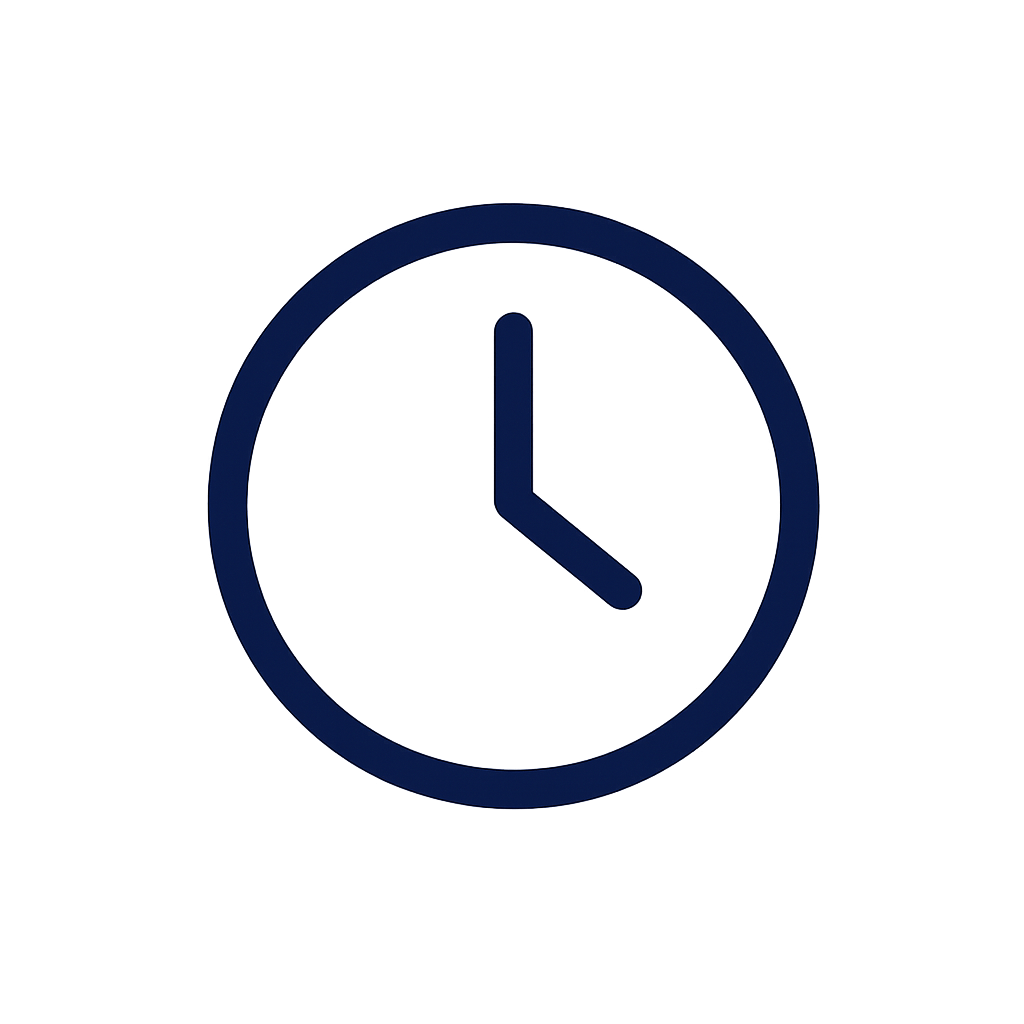



.png?width=645&height=667&name=Widgets%20(2).png)


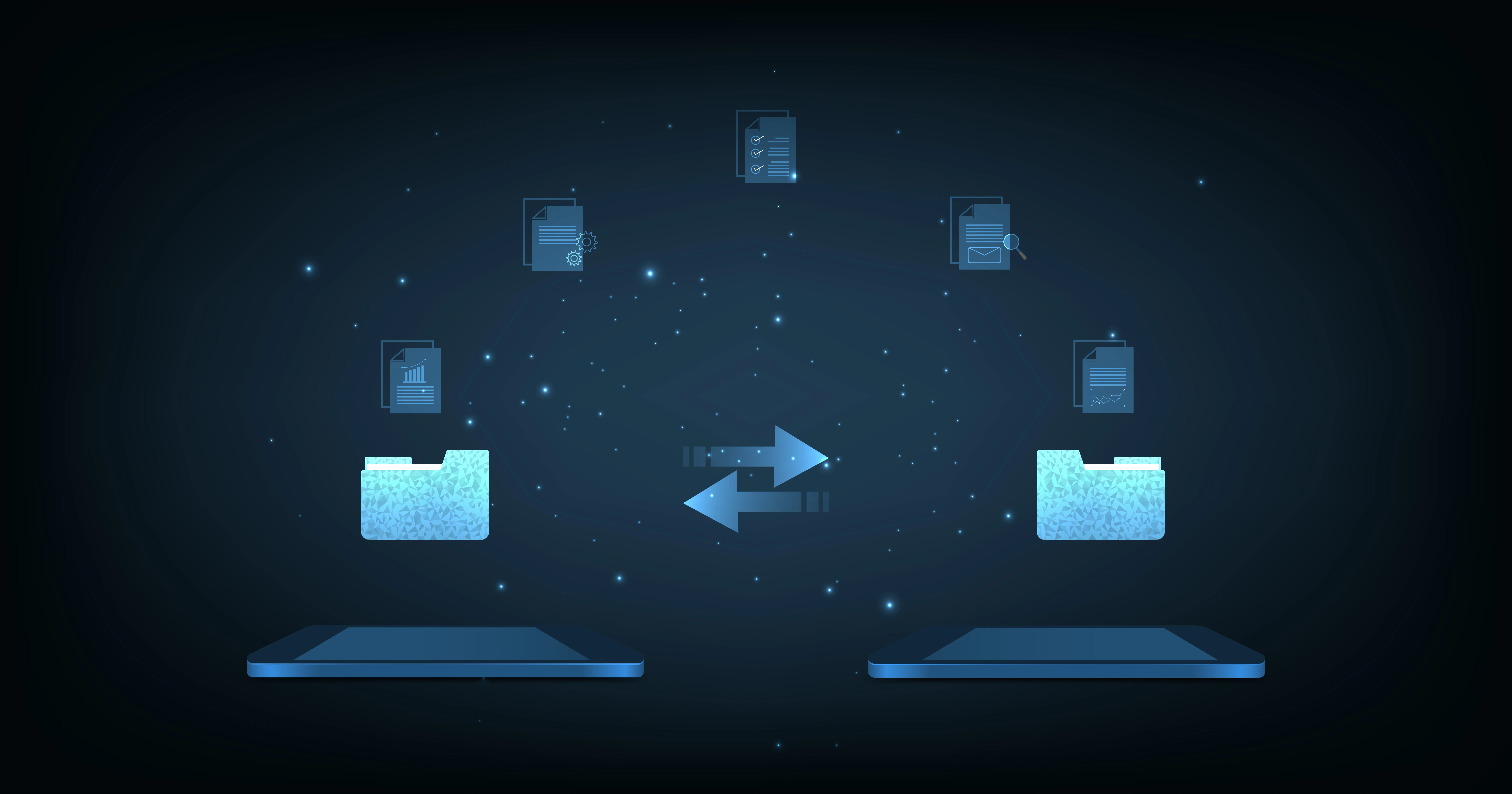











.png)

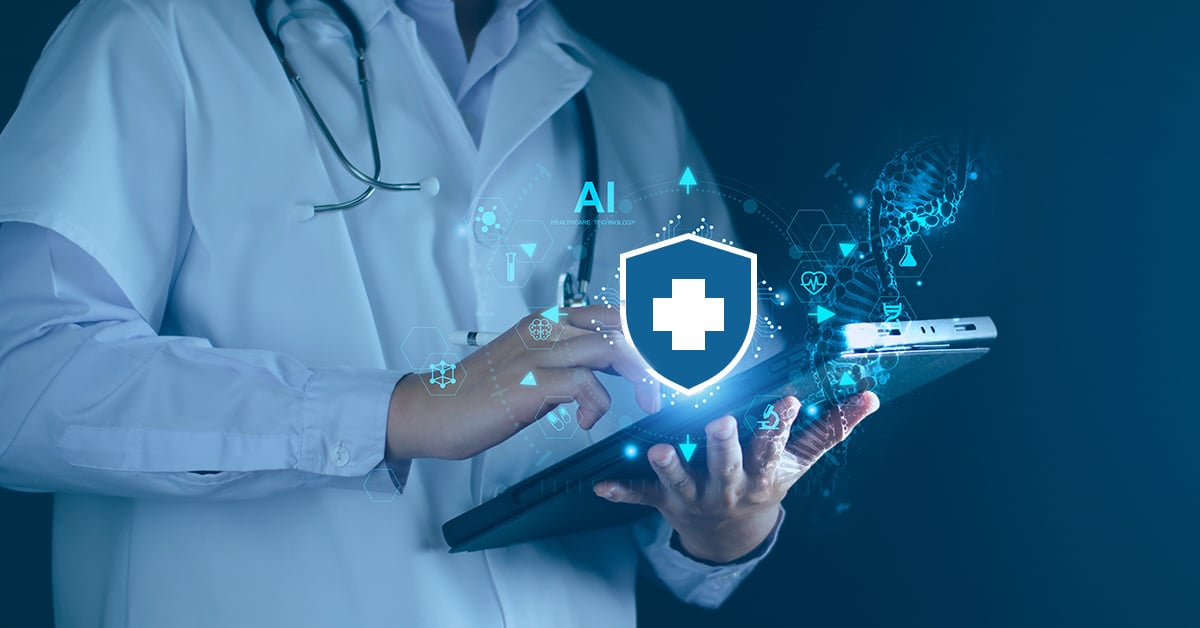

.webp)
